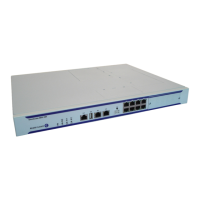VPLS Service Configuration Commands
Page 498 7750 SR OS Services Guide
max-nbr-mac-addr
Syntax max-nbr-mac-addr table-size
no max-nbr-mac-addr
Context config>service>vpls>sap
config>service>vpls>spoke-sdp
Description This command specifies the maximum number of FDB entries for both learned and static MAC
addresses for this SAP or spoke SDP.
When the configured limit has been reached, and discard-unknown-source has been enabled for this
SAP or spoke SDP (see discard-unknown-source on page 496), packets with unknown source MAC
addresses will be discarded.
The no form of the command restores the global MAC learning limitations for the SAP or spoke SDP.
Default no max-nbr-mac-addr
Parameters table-size — Specifies the maximum number of learned and static entries allowed in the FDB of this
service.
Values 1 — 196607
Chassis-mode C limit: 196607
multi-service-site
Syntax multi-service-site customer-site-name
no multi-service-site
Context config>service>vpls>sap
Description This command associates the SAP with a customer-site-name. If the specified customer-site-name
does not exist in the context of the service customer ID an error occurs and the command will not
execute. If customer-site-name exists, the current and future defined queues on the SAP (ingress and
egress) will attempt to use the scheduler hierarchies created within customer-site-name as parent
schedulers.
This command is mutually exclusive with the SAP ingress and egress scheduler-policy commands. If
a scheduler-policy has been applied to either the ingress or egress nodes on the SAP, the multi-
service-site command will fail without executing. The locally applied scheduler policies must be
removed prior to executing the multi-service-site command.
The no form of the command removes the SAP from any multi-service customer site the SAP belongs
to. Removing the site can cause existing or future queues to enter an orphaned state.
Default None
customer-site-name — The customer-site-name must exist in the context of the customer-id defined
as the service owner. If customer-site-name exists and local scheduler policies have not been
applied to the SAP, the current and future queues defined on the SAP will look for their parent
schedulers within the scheduler hierarchies defined on customer-site-name.
Values Any valid customer-site-name created within the context of the customer-id

